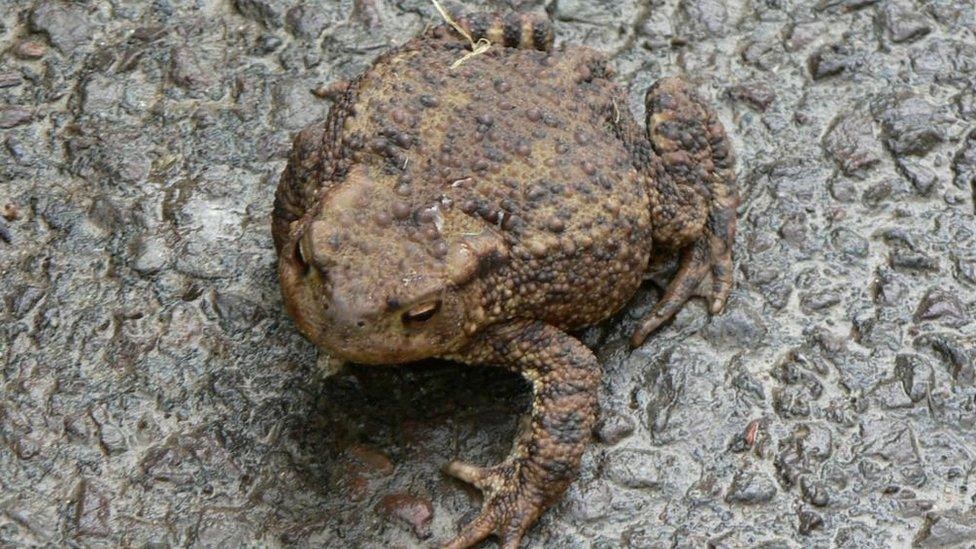Salamanders' super toes help them 'fly'
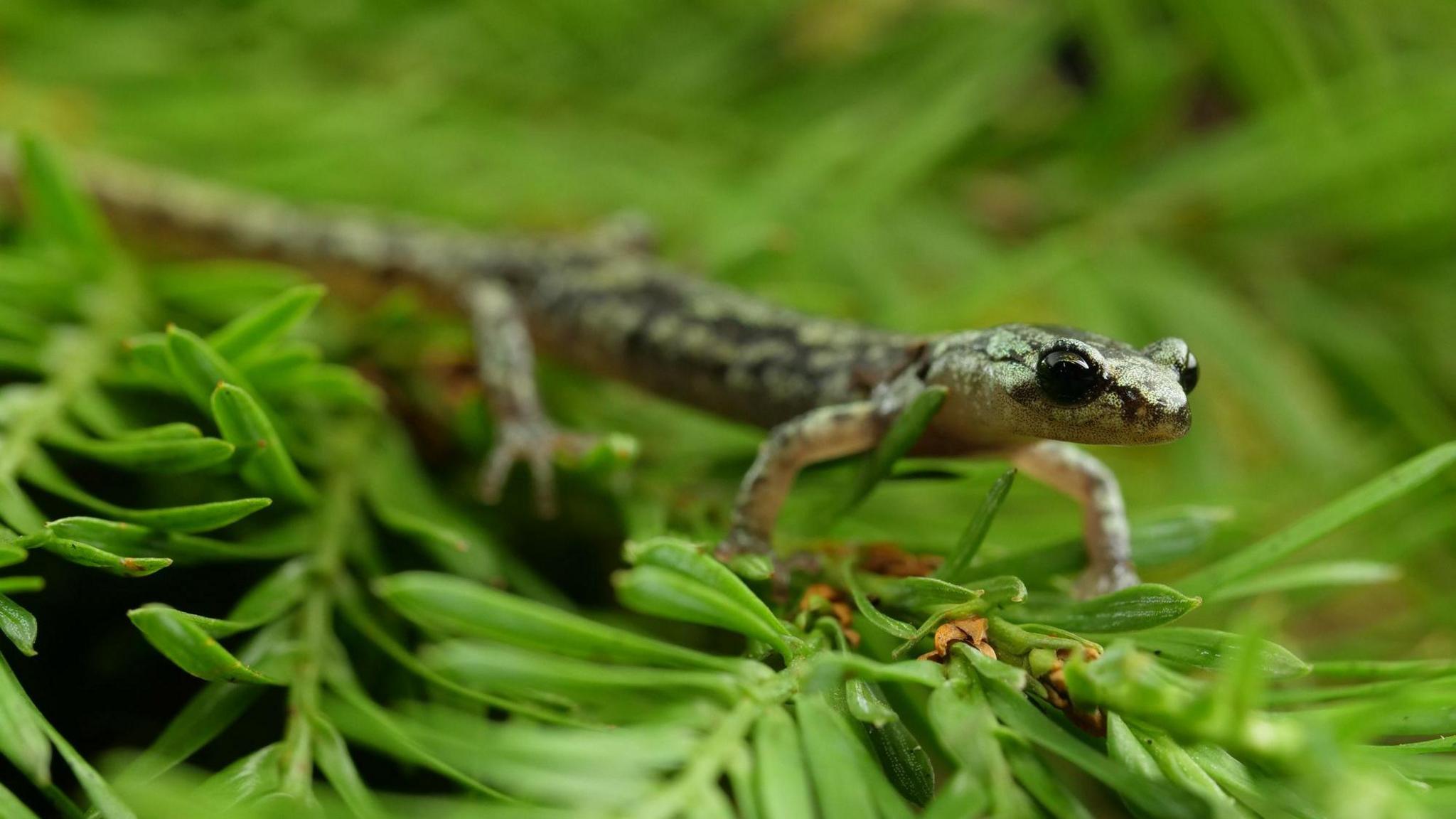
- Published
Small salamanders know how to get places. The amphibians are known for gliding through forest trees - making it look like they're skydiving.
But how they stick their take-offs and landings has remained a mystery that's puzzled scientists.
Now a new study in the Journal of Morphology reveals the answer may have a lot to do with a surprising mechanism - blood-powered toes.
The research team, led by Washington State University, discovered that they can quickly fill, trap and drain the blood in their toe tips to attach, detach and move through their environments.
More amazing amphibian stories
- Published6 February 2020
- Published10 December 2024
- Published15 October 2023
How were blood-powered salamander toes discovered?
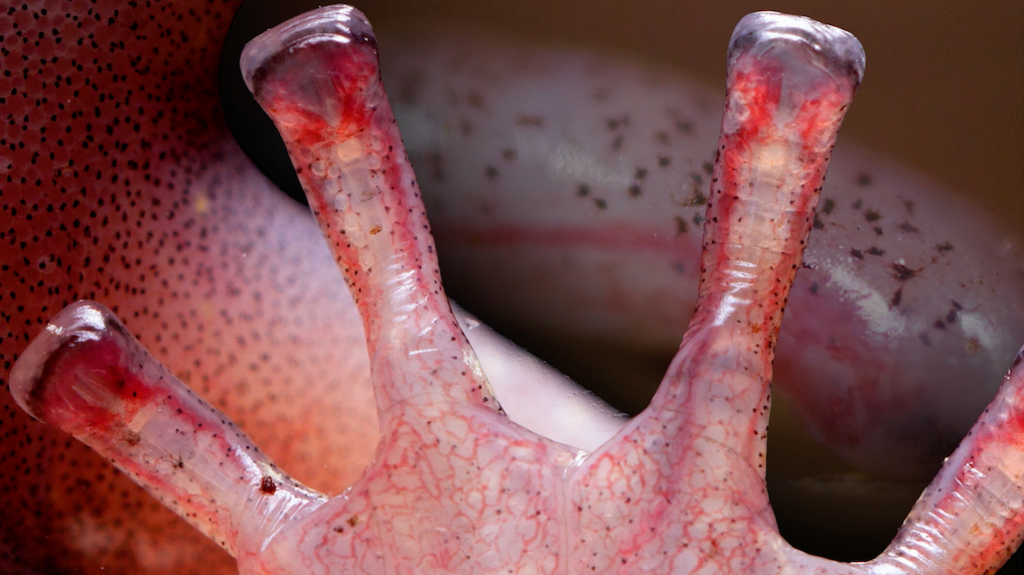
Here we can see a salamander's square toes and red blood "lakes"
The salamander's square shaped toes and and bright red blood "lakes", which can be seen just beneath their clear skin, were previously thought to help them get oxygen.
Then during the filming of a documentary, lead author of the study Christian Brown got to see them through a high-powered camera.
Christian said he noticed something strange - that blood was rushing into their toe tips moments before they took a step.
Christian and the camera assistant repeatedly saw this happen. "We looked at each other like, 'Did you see that?'" he said.
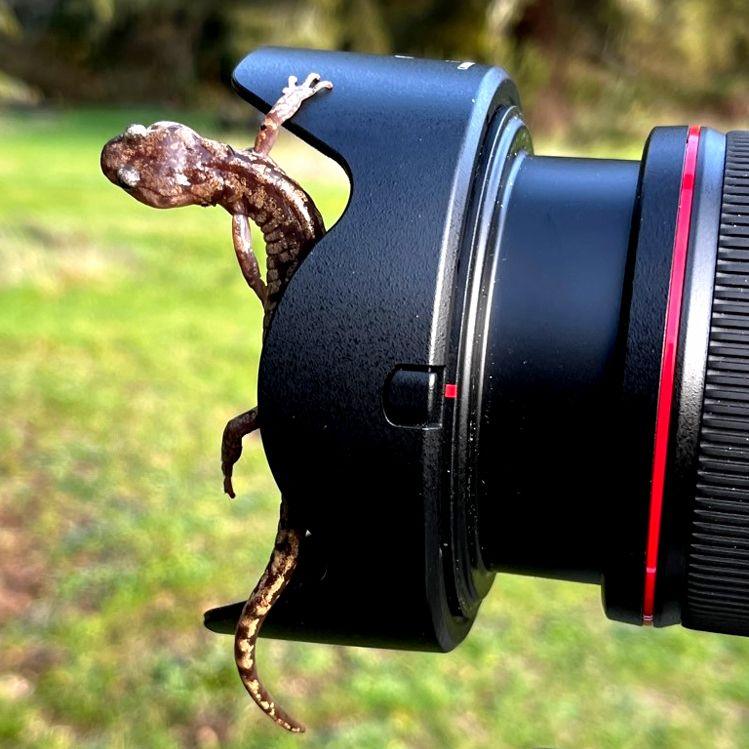
This salamander wasn't afraid to jump in front of the camera!
His research then found that wandering salamanders can finely control and regulate blood flow to each side of their toe tips.
This is important for them when they navigate uneven and slippery surfaces, and for landing safely when they parachute between branches.
"If you're climbing a redwood and have 18 toes gripping bark, being able to detach efficiently without damaging your toe tips makes a huge difference," Christian said.
How could salamander toes help with modern technology?
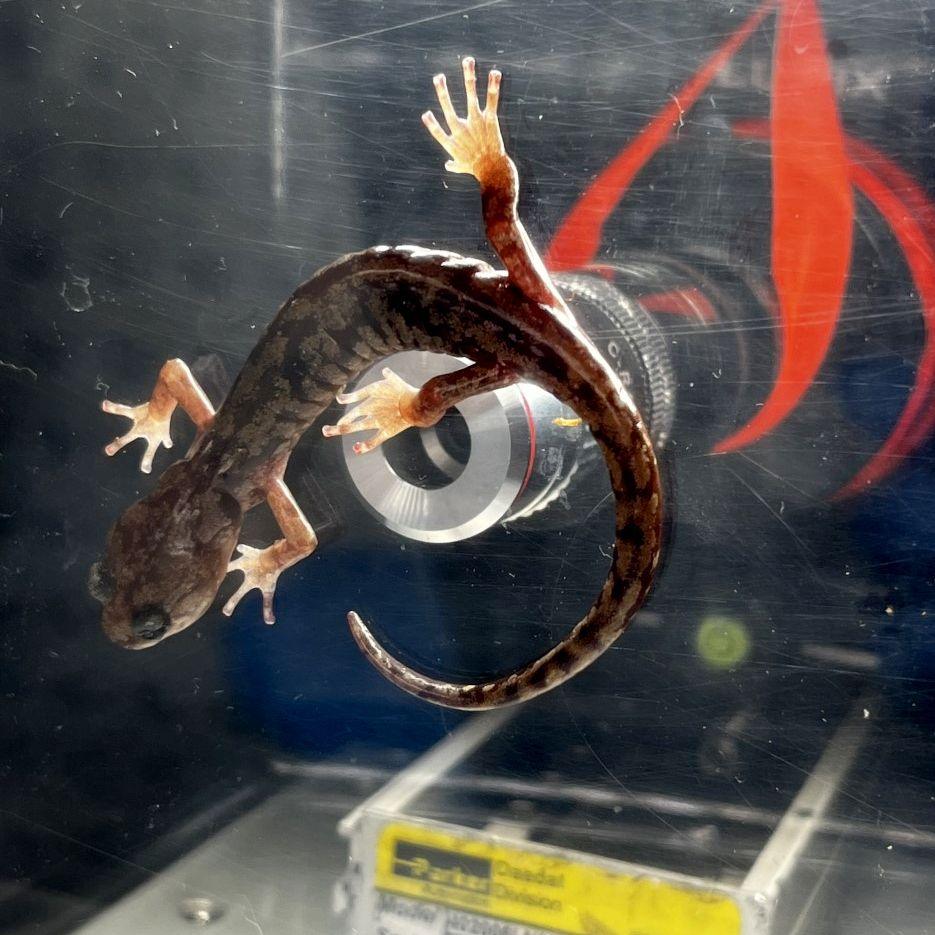
Ready for a 'pho-toe' shoot?
This research could help develop new glues, prosthetics, and even robotic parts.
Christian said: "Gecko-inspired adhesives already allow surfaces to be reused without losing stickiness,"
"Understanding salamander toes could lead to similar breakthroughs in attachment technologies."
More stories like this
- Published12 March 2024
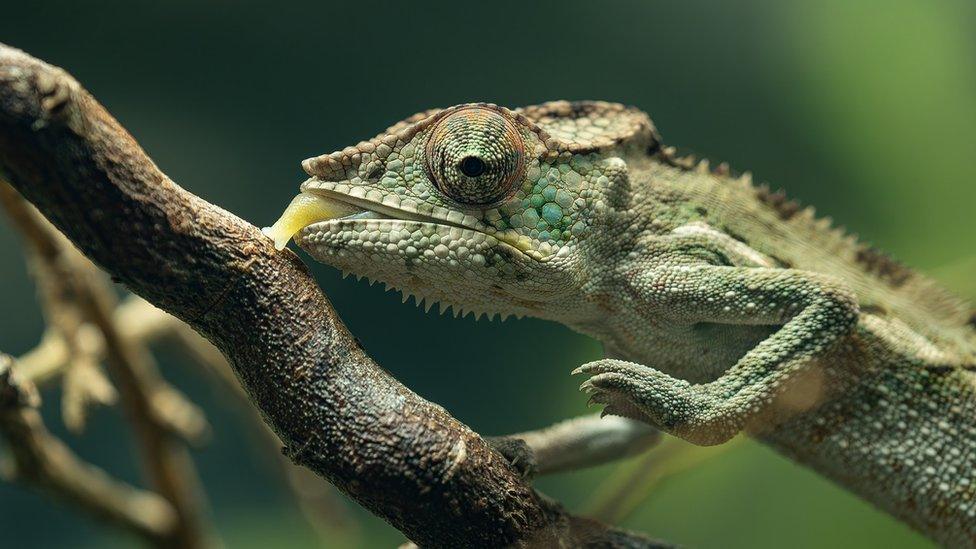
- Published6 November 2020
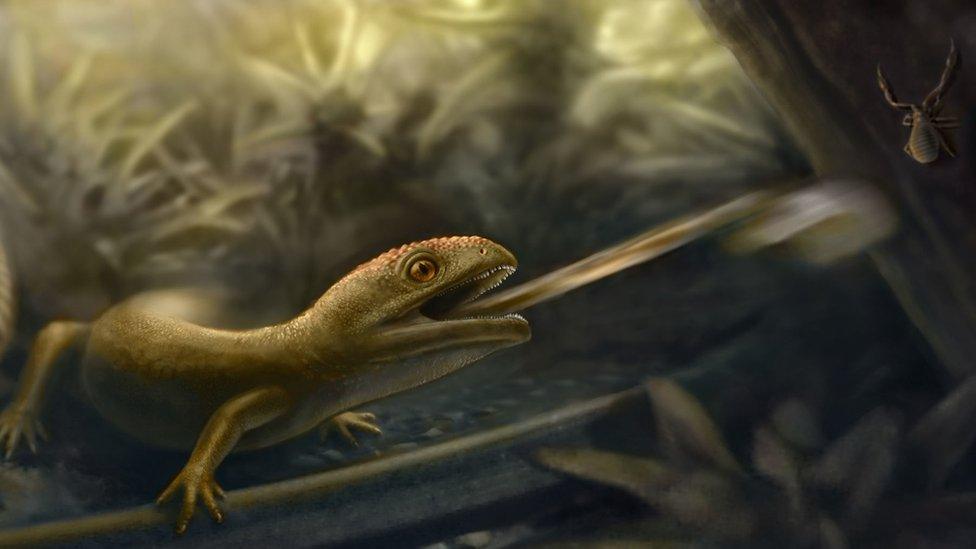
- Published10 July 2022
